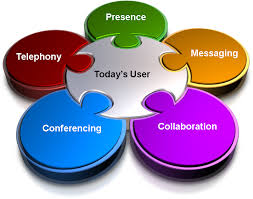The Power of Unified Communication
Unified communication is revolutionising the way businesses and individuals communicate and collaborate. By integrating various communication tools and platforms into a single interface, unified communication streamlines interactions, boosts productivity, and enhances connectivity.
One of the key benefits of unified communication is its ability to break down communication silos. Instead of juggling multiple applications for emails, messaging, video conferencing, and phone calls, users can access all these tools from a centralised platform. This not only saves time but also ensures seamless communication across different channels.
Collaboration is another area where unified communication shines. With features such as real-time document sharing, video conferencing, and instant messaging, teams can work together more efficiently regardless of their physical location. This is especially valuable in today’s globalised workforce where remote work is increasingly common.
Furthermore, unified communication enhances flexibility and mobility. Users can access their communication tools from any device with an internet connection, enabling them to stay connected on the go. Whether you’re in the office, at home, or travelling abroad, you can always remain in touch with colleagues and clients.
Security is also a top priority in unified communication systems. By centralising data storage and implementing robust encryption protocols, organisations can protect sensitive information and ensure compliance with data protection regulations.
In conclusion, unified communication offers a comprehensive solution for modern-day communication challenges. By bringing together disparate tools into a cohesive platform, it empowers users to communicate effectively, collaborate seamlessly, and stay connected wherever they are. Embrace the power of unified communication and unlock new possibilities for your business or personal interactions.
Understanding Unified Communication: Key Benefits, Features, and Security for Businesses
- What is unified communication and how does it work?
- What are the key benefits of implementing unified communication in a business?
- How can unified communication improve collaboration among remote teams?
- What features should I look for in a unified communication system for my organisation?
- Is unified communication secure, and what measures are in place to protect data privacy?
- How can unified communication help businesses save costs and increase efficiency?
What is unified communication and how does it work?
Unified communication is a comprehensive solution that integrates various communication tools and channels into a single platform, providing users with a seamless and efficient way to connect and collaborate. By consolidating services such as email, instant messaging, video conferencing, and voice calls, unified communication simplifies the communication process and enhances productivity. This technology works by centralising all communication functions, allowing users to access them from any device with an internet connection. Through unified communication systems, individuals and organisations can streamline their interactions, improve collaboration among team members, and stay connected across different channels effortlessly.
What are the key benefits of implementing unified communication in a business?
Implementing unified communication in a business offers a multitude of key benefits that can significantly enhance operations and productivity. By integrating various communication tools into a single platform, businesses can streamline their interactions, improve collaboration among teams, and boost overall efficiency. Unified communication breaks down silos between different channels, enabling seamless communication through one centralised interface. This not only saves time but also ensures consistent messaging across the organisation. Additionally, the flexibility and mobility provided by unified communication allow employees to stay connected from anywhere, facilitating remote work and enhancing responsiveness to clients. Moreover, the enhanced security features of unified communication systems help safeguard sensitive data and ensure compliance with regulations, providing peace of mind for businesses.
How can unified communication improve collaboration among remote teams?
Unified communication can significantly enhance collaboration among remote teams by providing a centralised platform that integrates various communication tools. With features such as real-time messaging, video conferencing, document sharing, and project management tools accessible from a single interface, remote team members can easily connect, communicate, and collaborate regardless of their physical location. This seamless integration fosters efficient information sharing, enhances team visibility and accountability, and promotes a sense of unity among remote workers. By breaking down communication barriers and enabling instant access to essential resources, unified communication empowers remote teams to work together effectively towards common goals.
What features should I look for in a unified communication system for my organisation?
When considering a unified communication system for your organisation, it is essential to look for key features that align with your specific needs and goals. Firstly, consider the platform’s compatibility with various devices and operating systems to ensure seamless integration across your organisation. Robust security measures, such as encryption protocols and access controls, are crucial for safeguarding sensitive data and ensuring compliance. Look for features like video conferencing, instant messaging, file sharing, and presence indicators to enhance collaboration among team members. Scalability is also important, allowing your system to grow alongside your business. Lastly, user-friendly interfaces and comprehensive technical support can make a significant difference in user adoption and overall satisfaction with the unified communication system.
Is unified communication secure, and what measures are in place to protect data privacy?
In response to the frequently asked question about the security of unified communication, it is essential to highlight that unified communication systems prioritise data security and privacy. To ensure the protection of sensitive information, robust measures are in place, including encryption protocols, secure data transmission channels, authentication processes, and access controls. By centralising data storage and implementing stringent security practices, unified communication platforms strive to safeguard user data from potential threats and breaches. These proactive measures not only enhance the overall security of communication channels but also help organisations maintain compliance with data protection regulations, instilling confidence in users regarding the confidentiality and integrity of their information.
How can unified communication help businesses save costs and increase efficiency?
Unified communication can help businesses save costs and increase efficiency in several ways. By consolidating multiple communication tools into a single platform, companies can reduce licensing fees, maintenance costs, and training expenses associated with managing disparate systems. This streamlined approach not only cuts down on overheads but also simplifies IT management, allowing for quicker troubleshooting and updates. Additionally, unified communication enhances productivity by enabling seamless collaboration among teams, regardless of their location or device. This leads to faster decision-making, improved project coordination, and ultimately, greater operational efficiency. With the ability to integrate voice, video, messaging, and data sharing into one cohesive system, businesses can streamline workflows, enhance communication processes, and achieve significant cost savings while boosting overall performance.
Tags: benefits, business, centralised interface, collaboration, communication tools, efficiency, flexibility, implementing, integration, mobility, platform, productivity, remote teams, seamless, security, unified communication
